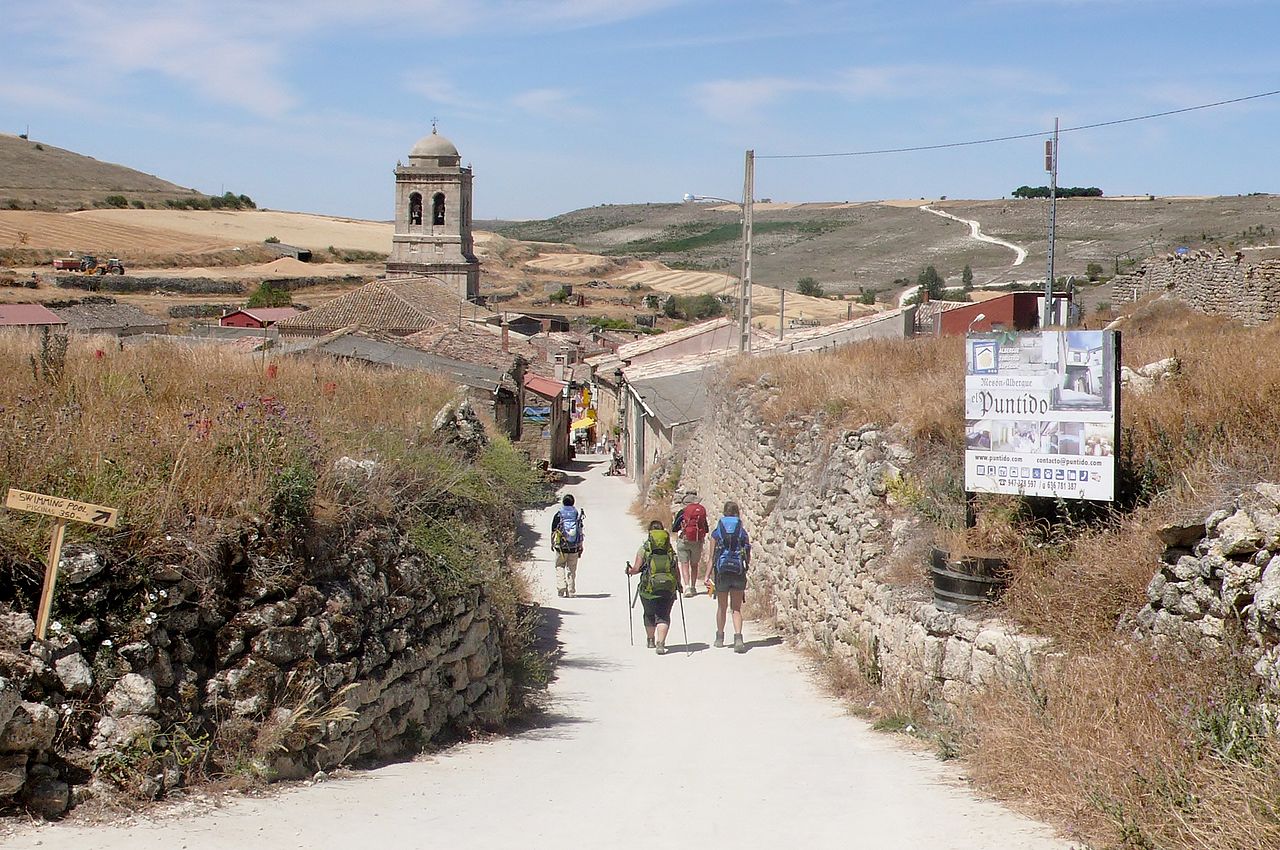
The Camino Frances de Santiago is the most used by pilgrims who make the Jacobean route. It is also the one with the greatest historical tradition, as it is already described in the 'Codex Calixtino', dated in the twelfth century and which is one of the most important texts of all that have been written about the pilgrimage to Santiago de Compostela.
The Camino de Santiago Frances part of St. John-Pied-de-Port, in the Gallic Lower Navarra, where the most important Jacobean routes in Europe arrive. Then enter Spain for the legendary Rocesvalles pass and continues its itinerary through the Iberian Peninsula until reaching the city of the Apostle. Let's go through it. If you dare to follow us, you will enjoy beautiful historical towns, wonderful landscapes and an unforgettable journey.
Camino de Santiago Francés: its main stops
In our itinerary, we will stop in some cities of this Jacobean itinerary. But not in the big capitals, which you will already know more than enough, but in those other monumental towns with a great historical tradition. Let's start walking.
Estella, capital of Navarrese Romanesque
Historic city where they exist, Estella is considered the capital of Navarrese Romanesque. You will arrive there after leaving Pamplona and we advise you to see the Palace of the Kings of Navarra, which is the only civil Romanesque construction that remains in the entire Autonomous Community. It was built in the XNUMXth century and is a National Monument.
Along with this, you should also know the courthouse, Baroque building of the XVIII; that of the Sancristóbal, Renaissance, and the Governor's, which stands out for its monumental simplicity. You should also visit the remains of the call New Jewish Quarter, of which a tower with two loopholes is preserved.
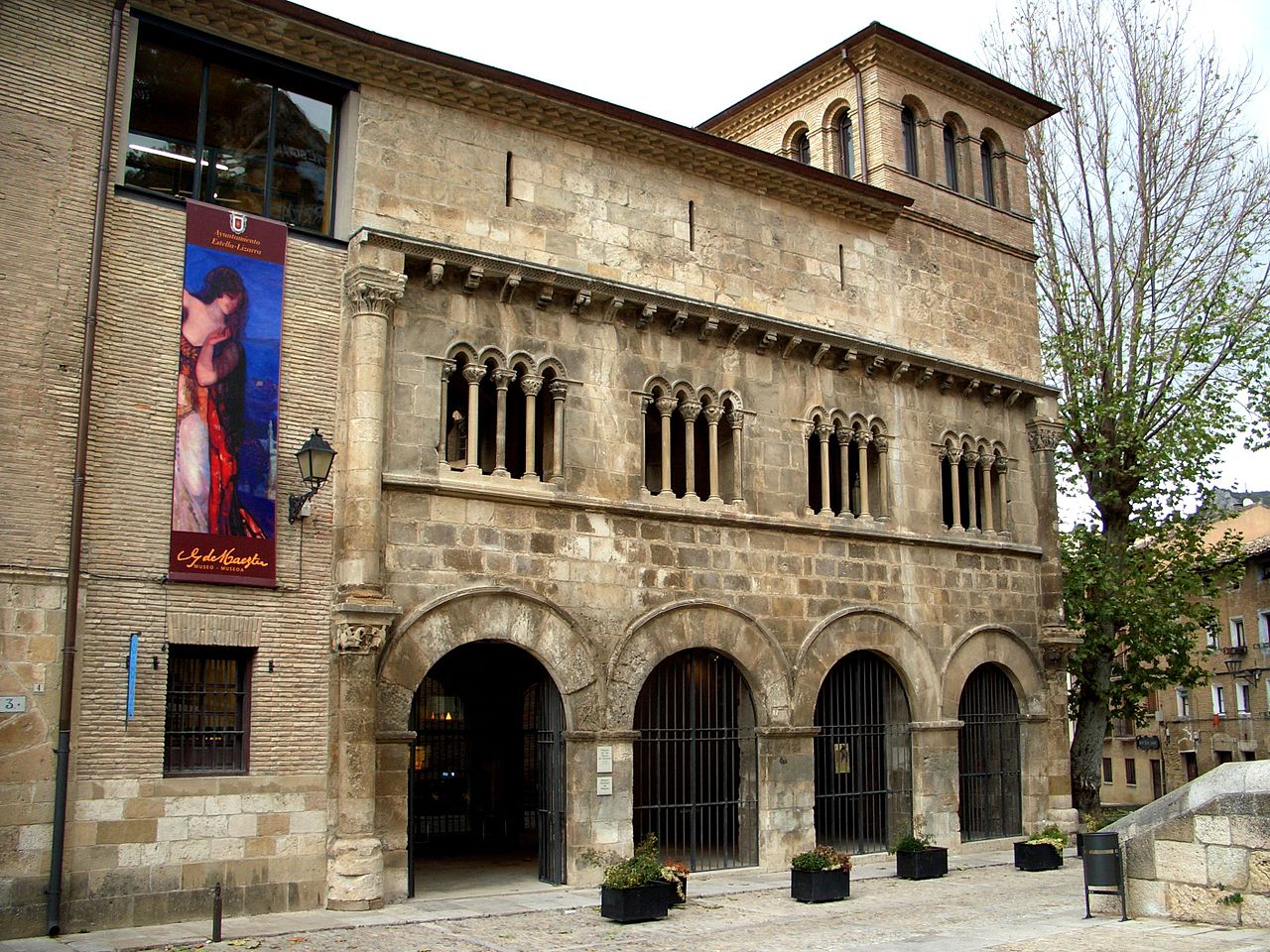
Palace of the Kings of Navarra
But, if Estella stands out for something among the cities of the Camino de Santiago Frances, it is because of its huge religious heritage. It is made up of churches such as those of Saint Peter of the Rua, of majestic air; that of Holy sepulchre, with its impressive deeply flared Gothic portico; that of San Miguel, with its Cover of the Gospel; that of San Juan, with its neoclassical façade, or the Basilica of the Puy, restored in the XNUMXth century.
Also belonging to the religious heritage are convents such as Las Recoleta Conceptionists, with its imposing façade, and that of Casa Particular in Santa Clara, built in the seventeenth century and which houses three spectacular baroque altarpieces.
Nájera, another essential stop on the Camino de Santiago Frances
You will get an idea of the historical importance of this small town in La Rioja if we tell you that, for a time, it was capital of the Kingdom of Nájera-Pamplona, back in the XNUMXth century. In the villa you have to visit the beautiful Monastery of Santa María la Real, especially its temple, with the royal pantheon, and its magnificent Cloister of the Knights, which is accessed by the Carlos I Gate in flamboyant gothic style.
You should also see in Nájera the remains of the old alcazar; The church of the holy cross, a Renaissance gem, and the convent of Santa Elena, built in the XNUMXth century. Different character has the Botanical Garden of La Rioja, a wonder if you are fond of plants.
Santo Domingo de la Calzada
This town has so much tradition on the Camino de Santiago Frances that it even has a legend related to this. It is said that a pilgrim was accused of a murder committed in the town. To prove his innocence, Santo Domingo did fly a chicken that was already cooked and on the plate. Hence the saying "Santo Domingo de la Calzada, where the hen sang after roast".
Just your cathedral, where there is always one of these birds alive, it is one of the places you must visit. It combines Romanesque and Gothic styles, although its freestanding tower is Baroque. Inside, you have a wonderful Plateresque choir, the tomb of the saint himself and two beautiful chapels, those of Santa Teresa and La Magdalena.
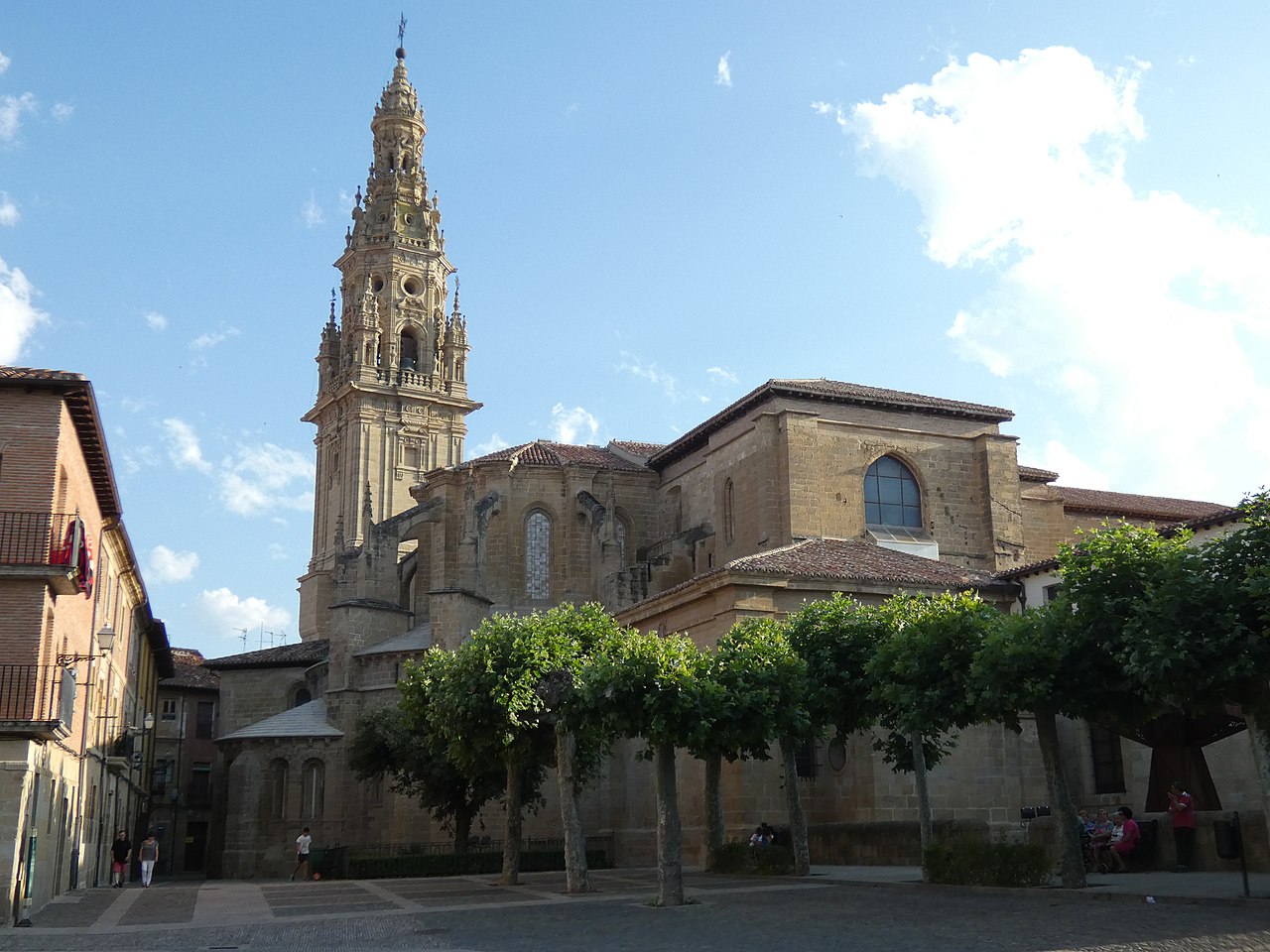
Cathedral of Santo Domingo de la Calzada
You should also see in Santo Domingo de la Calzada the convent of San Francisco, Herrerian style and that today is a parador de turismo, and the Cistercian abbey, with a magnificent baroque altarpiece.
In terms of civil architecture, the town has the largest walled enclosure of how many are preserved in La Rioja and also with numerous stately homes. Baroque style are the Town hall, House of the Marquis of La Ensenada and of the Leisure. Instead, the house of the Brotherhood of the Holy is Renaissance, while that of the Old Butchers and Palace of the Secretary of Carlos V they are neoclassical.
Carrión de los Condes
Capital of the Palencia region of Farmland Throughout history, this small town has had wonderful Romanesque buildings. Among them the church of Santa María del Camino and of Santiago, with a façade reminiscent of the Pórtico de la Gloria of the Compostela cathedral. But also the monastery of San Zoilo, which has a spectacular Plateresque cloister, and that of Casa Particular in Santa Claraas well as a church of Our Lady of Bethlehem, with a beautiful plateresque altarpiece.
Astorga
Already in the Leonese part of the Camino de Santiago Frances, you will arrive at the old Asturica Augusta Roman. To show you everything you can see in it we would need more than one article.
However, essential visits are the old wall from the XNUMXth century, perfectly preserved; the Town hall, built in the XNUMXth century and whose clock strikes the hours with two dolls dressed in maragatos; the churches of San Bartolome y Santa MartaRomanesque the first and neoclassical the second; the convents of San Francisco and the Sancti Spiritus and the spectacular Major Seminary, a classic building with Herrerian reminiscences.
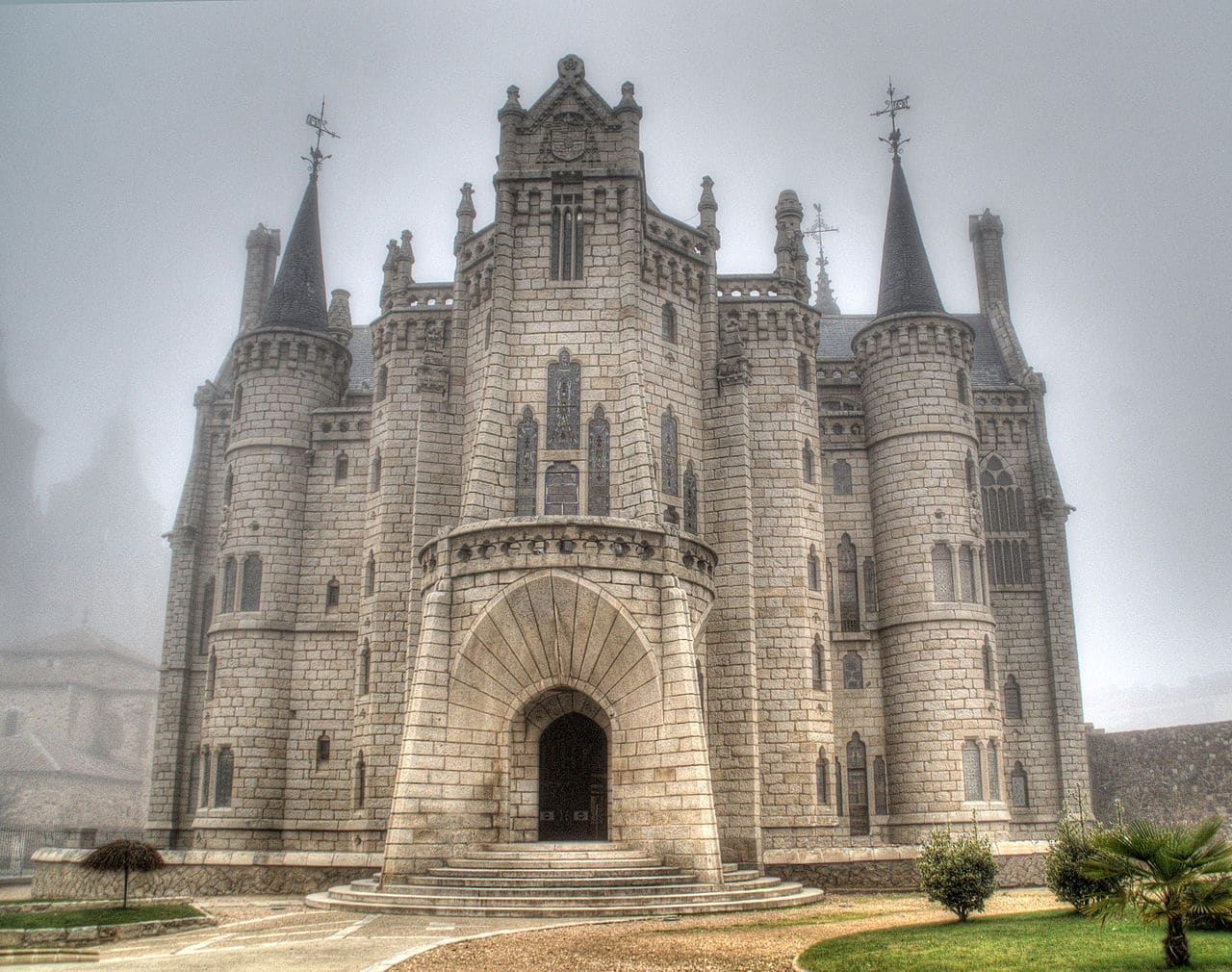
Episcopal Palace of Astorga
But there are two buildings in Astorga that stand out from the rest. The first is the cathedral, which combines Gothic, Renaissance and Baroque styles and has a beautiful Churrigueresque façade. The second is the Episcopal palace, a wonderful work of the great Antonio Gaudi which is as unclassifiable in style as all his.
Villafranca del Bierzo, on the Galician border of the French Way of Santiago
We could have stopped at Ponferrada to tell you about its impressive Templar castle, its churches and its monasteries. However, we have preferred to pass by to focus on another less known but equally beautiful town.
Villafranca del Bierzo is all of it Historic Artistic Set. This is due to wonders like the Santa Maria de Cluny Collegiate Church, a colossal XNUMXth century building; the church-convent of San Nicolás, for whose construction El Escorial was taken as a model; the convent of San Francisco, founded by Doña Urraca in the XNUMXth century, and the Castle of the Marquis of Villafranca, built in the XNUMXth century on a previous one in feudal style.
Samos
Already in the Galician part of the Camino de Santiago Frances, you will arrive at Samos, located in a wonderful environment in the province of Lugo. It is dominated by Sierra del Oribio and mountains of Piedrafita. In it you have to see the impressive Benedictine Abbey of Saint Julian, whose origins date back to the XNUMXth century.
King's shovels
It is the last town of importance before reaching Santiago de Compostela. In it you have to see the Romanesque church of Vilar de Donas, built in the middle of the XNUMXth century, and the Pambre castle, a medieval fortification very well preserved despite its antiquity.
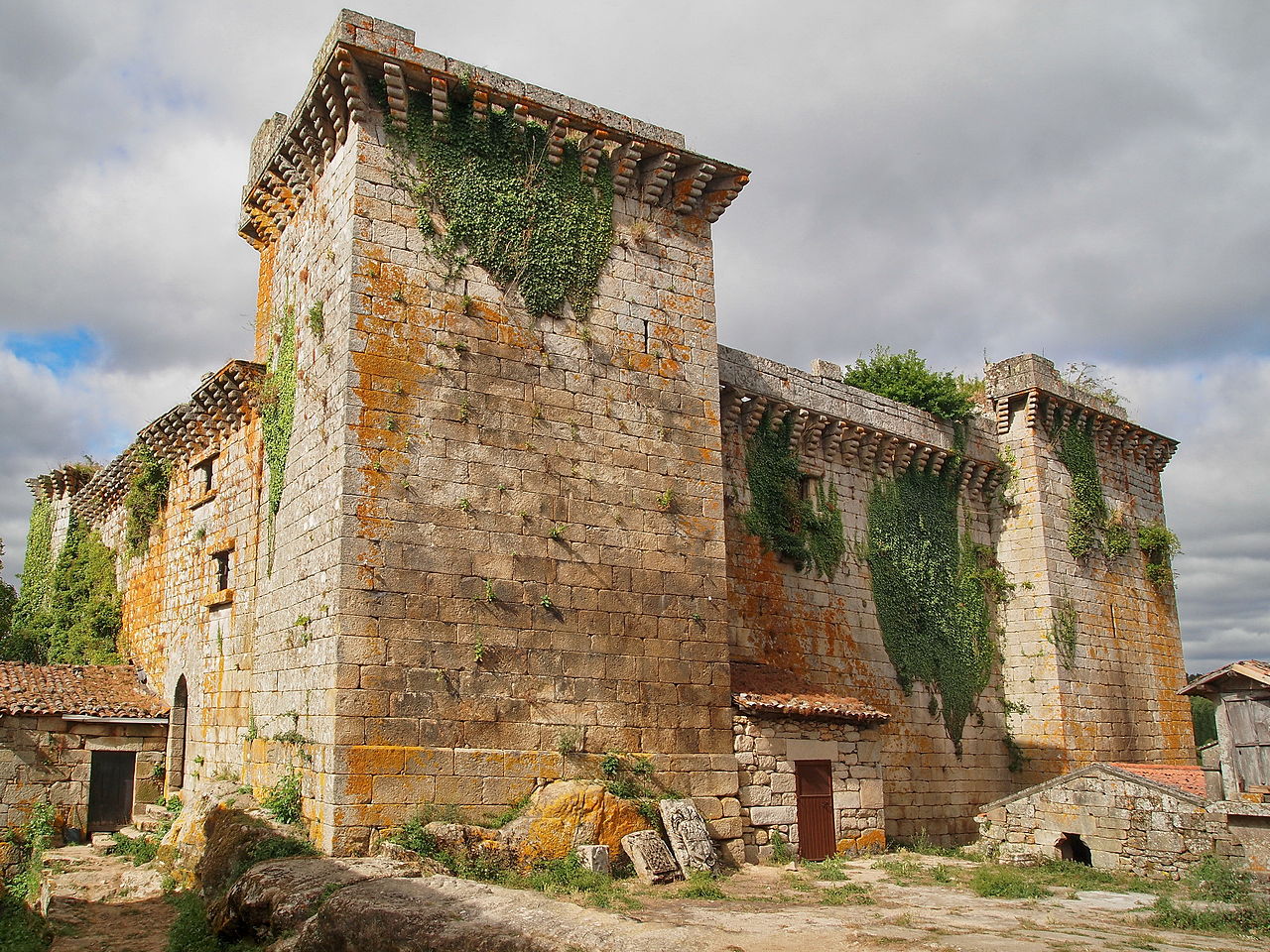
Pambre Castle
When is it better to do the Camino de Santiago Frances
Like any other pilgrimage route, the Camino Frances de Santiago is not recommended in cold months. Low temperatures are not good for walking and also tend to coincide with the rainiest season.
Neither is summer advisable for walking. High temperatures will force you to do more wear or to stop in the middle of the day. In addition, they are usually the busiest dates, a condition for finding a place in the pilgrim hostels.
Therefore, the best time to do the French Way is spring, although you can also choose the first months of autumn.
In conclusion, we have shown you some of the most interesting stops on the Camino de Santiago Frances from the monumental point of view. We have tried to tell you about towns less known than the large provincial capitals. In any case, doing this pilgrimage route is always an experience enriching and wonderful. Don't feel like hitting the road?
Hi! We would like to make a clarification, the end of the stage after Villafranca - according to the Calixtino codex - is the town of Triacastela. A site that in addition to mentioning, we recommend you visit. All the best!